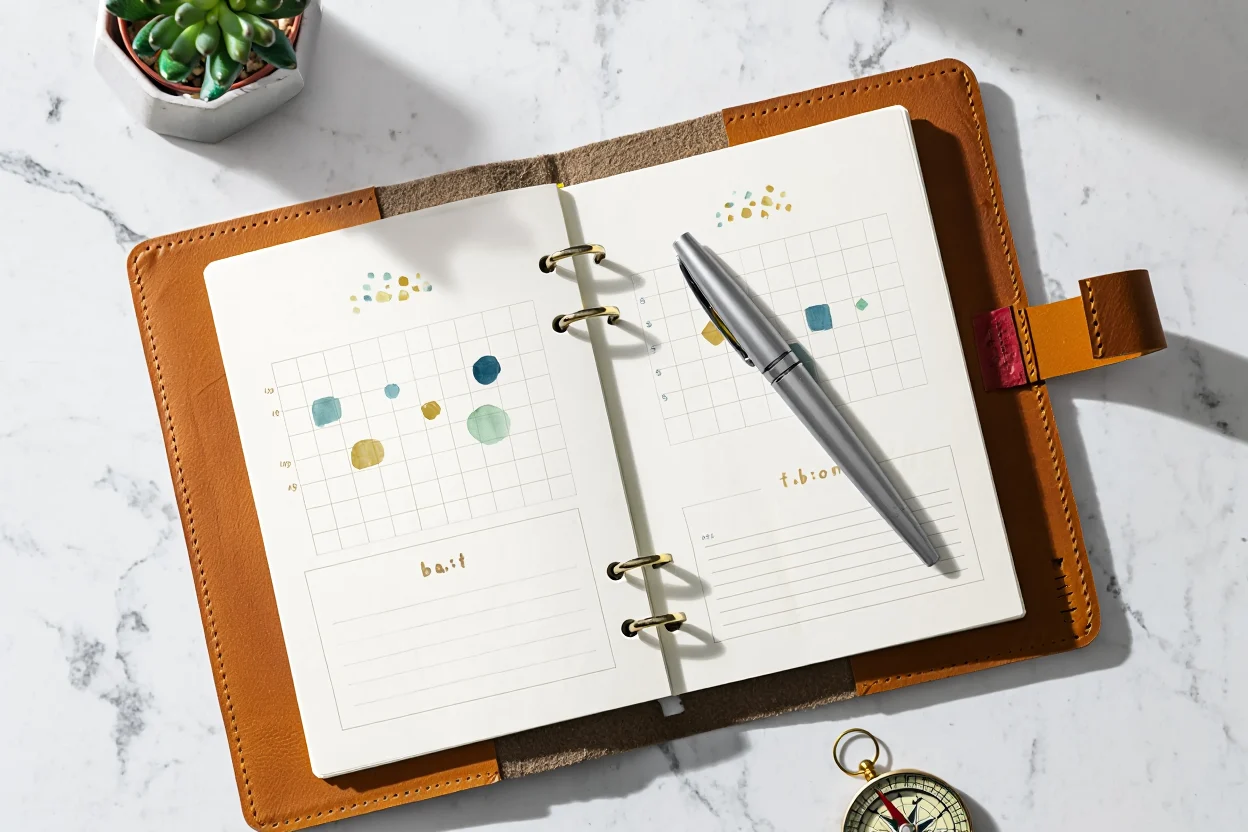Tracking your habits is one of the most effective ways to create lasting change. A habit journal not only helps you monitor your progress but also provides valuable insights into what’s working—and what isn’t—on your wellness journey. By documenting your daily actions, reflecting on your growth, and staying accountable, you can turn small efforts into significant achievements. In this article, we’ll explore how to create and use a habit journal effectively, helping you stay focused, motivated, and consistent in your pursuit of a healthier, more balanced life.
Why Habit Journaling Works
Journaling transforms vague intentions into tangible actions. Writing things down creates a sense of accountability and clarity, making it easier to identify patterns, celebrate wins, and address setbacks.
1. Builds Awareness
A habit journal helps you notice trends in your behavior, such as when you’re most productive or what triggers lapses in consistency.
2. Provides Motivation
Seeing your progress on paper reinforces commitment and inspires you to keep going, even on challenging days.
3. Encourages Reflection
Regularly reviewing your journal allows you to assess what’s working and adjust your approach as needed, ensuring continuous improvement.
Step 1: Choose the Right Journaling Method
There are many ways to track habits, so choose a method that aligns with your preferences and lifestyle.
1. Paper Journals
Traditional notebooks or pre-designed habit trackers allow for creativity and personalization. They’re also free from digital distractions.
2. Digital Apps
Apps like Notion, Habitica, or Streaks offer customizable templates and reminders, making it easy to log habits on the go.
3. Bullet Journals
For those who enjoy creative layouts, bullet journals combine habit tracking with goal setting, notes, and reflections in one place.
Step 2: Define Your Key Habits
Start by identifying the habits you want to build or maintain. Focusing on too many at once can feel overwhelming, so prioritize 3-5 key areas.
1. Align with Your Goals
Choose habits that directly support your wellness objectives, such as drinking water, exercising, meditating, or practicing gratitude.
2. Keep It Simple
Break larger habits into smaller, manageable actions. For example, instead of “exercise,” write “do 10 minutes of yoga.”
3. Be Specific
Clearly define what success looks like for each habit. For instance, “read before bed” could mean reading for 15 minutes nightly.
Step 3: Use Visual Tracking Tools
Visual tools make it easy to see your progress at a glance, providing motivation and a sense of accomplishment.
1. Checklists
Mark off completed habits daily to create a sense of satisfaction and consistency.
2. Streaks and Calendars
Track consecutive days of habit completion using an “X” or color-coded system on a calendar. Seeing streaks grow encourages persistence.
3. Ratings System
Rate your effort or adherence on a scale (e.g., 1-5) to reflect how well you stuck to your habits each day. This adds nuance to your tracking.
Step 4: Reflect Regularly
Reflection is where the magic happens. Taking time to review your journal helps you learn, adapt, and stay motivated.
1. Weekly Check-Ins
At the end of each week, review your habit journal. Ask yourself: What went well? What challenges arose? How can I improve next week?
2. Celebrate Wins
Acknowledge your achievements, no matter how small. Completing a habit consistently, even for a short time, deserves recognition.
3. Address Setbacks
If you missed a habit, don’t dwell on guilt. Instead, analyze what happened and brainstorm solutions to prevent similar lapses in the future.
Step 5: Stay Accountable
Accountability boosts commitment and keeps you on track when motivation wanes.
1. Share Your Progress
Tell a friend or family member about your habit journal and goals. Knowing someone else is aware of your efforts increases accountability.
2. Join a Community
Participate in online groups or forums where members share their habit-tracking journeys. Encouragement from others can be incredibly motivating.
3. Reward Yourself
Set milestones and reward yourself when you achieve them. Treats like a relaxing bath, a new book, or a fun outing reinforce positive behavior.
Final Thoughts
Habit journaling is a powerful tool for creating meaningful, lasting change. By choosing the right method, defining clear habits, using visual tracking tools, reflecting regularly, and staying accountable, you can transform small daily actions into big results. Remember, the purpose of journaling isn’t perfection—it’s progress. Each step forward brings you closer to the life you envision.
What’s one habit you’ll start tracking today to bring more focus and clarity to your goals? Share your thoughts—we’d love to hear how habit journaling is helping you stay consistent and inspired!

